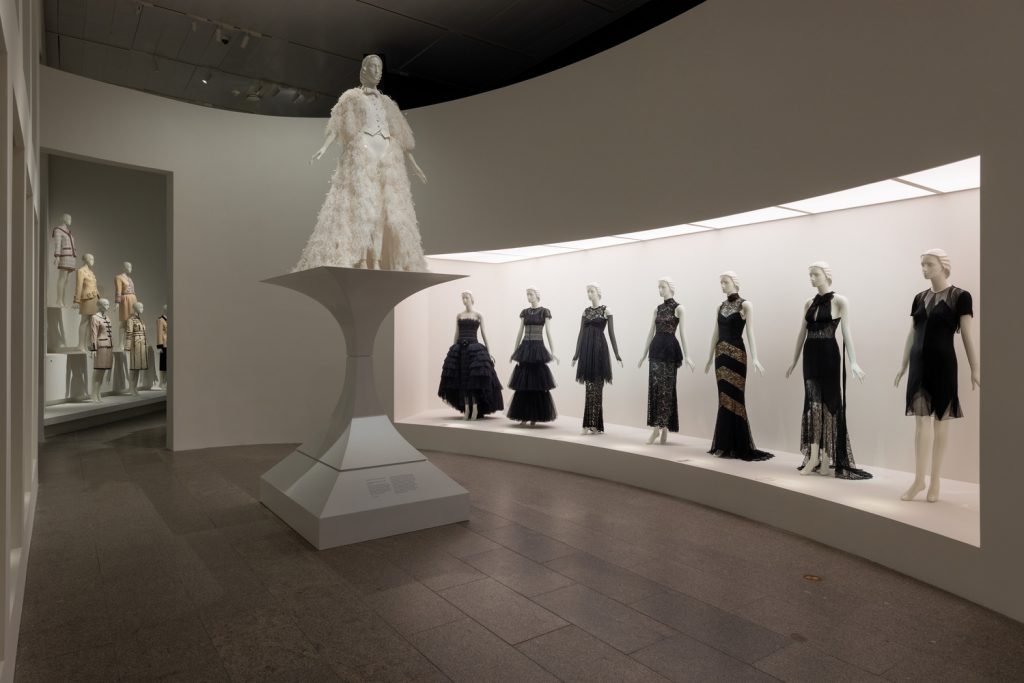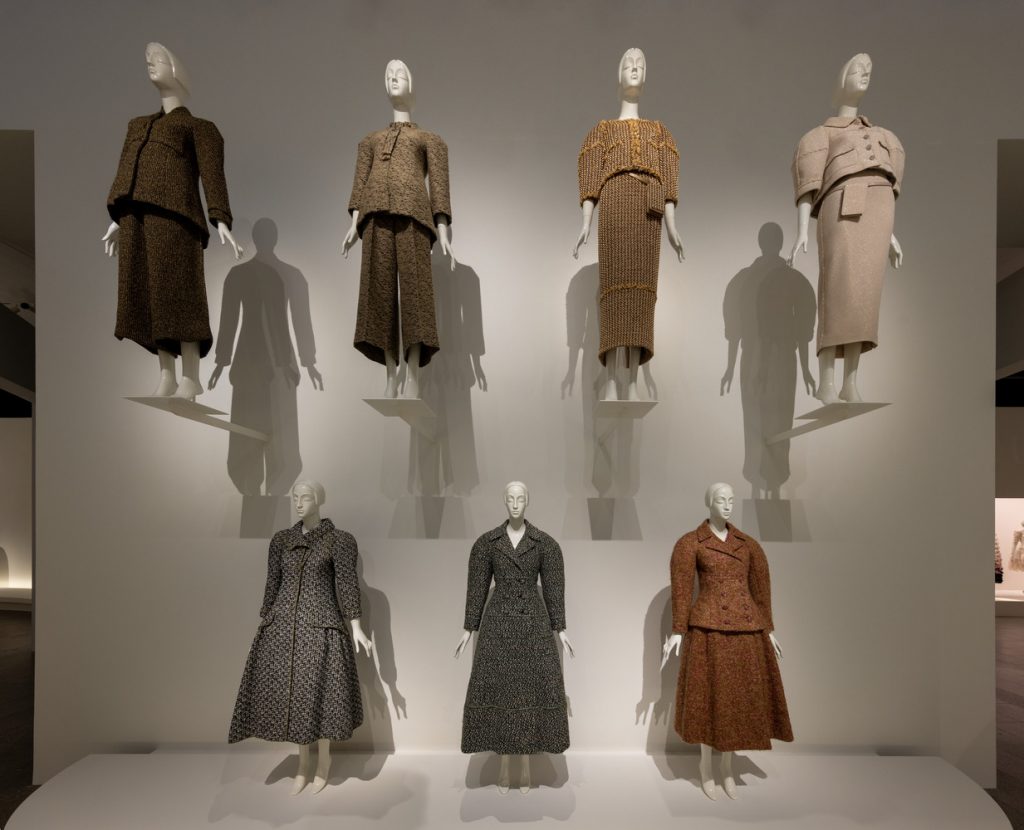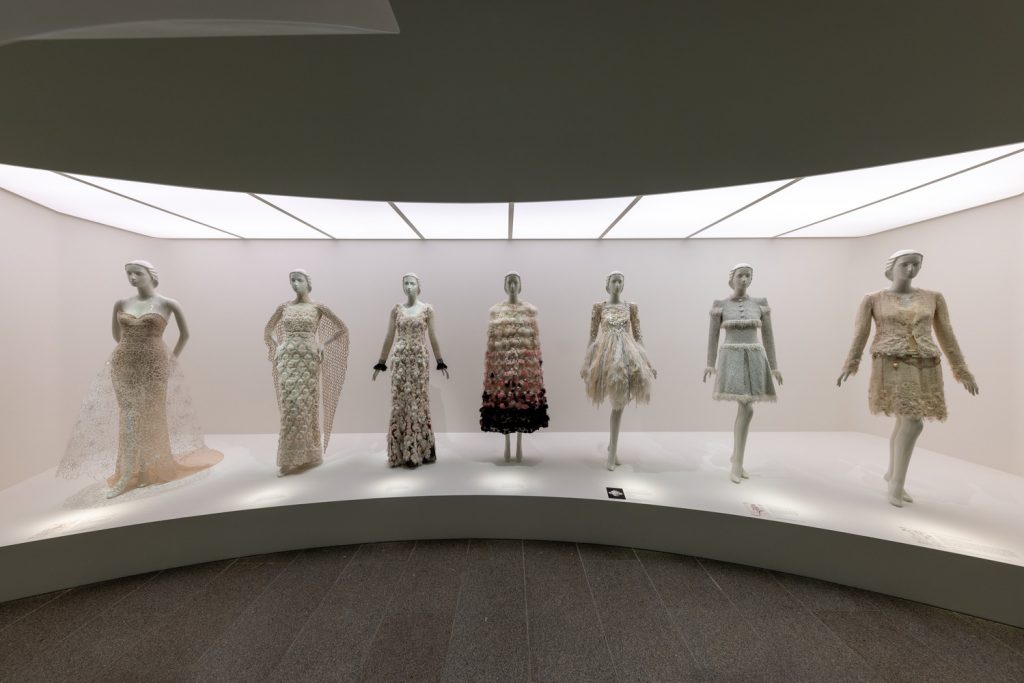Karl Lagerfeld: A Line of Beauty
The Costume Institute’s spring 2023 exhibition will examine the work of Karl Lagerfeld (1933–2019). Focusing on the designer’s stylistic vocabulary as expressed in aesthetic themes that appear time and again in his fashions from the 1950s to his final collection in 2019, the show will spotlight the German-born designer’s unique working methodology. Most of the approximately 150 pieces on display will be accompanied by Lagerfeld’s sketches, which underscore his complex creative process and the collaborative relationships with his premières, or head seamstresses. Lagerfeld’s fluid lines united his designs for Balmain, Patou, Chloé, Fendi, Chanel, and his eponymous label, Karl Lagerfeld, creating a diverse and prolific body of work unparalleled in the history of fashion.
To access the booklet of all large-print exhibition text, click here.
This exhibition contains ambient audio. For assistive listening, click here.
Exhibition Overview
The exhibition’s theoretical framework is inspired by William Hogarth’s book The Analysis of Beauty, which describes his theories of art and aesthetics centered around his concept of the line of beauty, or the serpentine line: an S-shaped curved line appearing within an object or as the boundary line of an object, representing liveliness and movement. While Hogarth viewed straight lines as representative of stillness and inactivity, Lagerfeld took inspiration from both the straight and serpentine line in equal measure.
Presented as a thematic and conceptual essay about Lagerfeld’s work, rather than a traditional retrospective, the show will open with introductory galleries that explore Lagerfeld’s early career, including being awarded the International Woolmark Prize in 1954 and his ensuing roles as a design assistant at Balmain and an artistic director of Patou, where he continued to refine his unique style of sketching.
Sketching was both Lagerfeld’s primary mode of creative expression and his primary mode of communication. Illustrating its significance to the designer’s creative practice, another introductory gallery will be dedicated to the premières d’atelier—the seamstresses regarded as the architects of Lagerfeld’s vision, responsible for translating his two-dimensional drawings into three-dimensional garments. Shedding light on this creative collaboration will be a series of on-camera interviews—conducted by French filmmaker Loïc Prigent, who followed and documented the late designer’s collections from 1997 to 2019—featuring premières from Chanel, Chloé, Fendi, and Lagerfeld’s eponymous label.
The subsequent sections of the exhibition will be anchored by two through lines that represent conceptual expressions of Lagerfeld’s sketches: the serpentine line and the straight line, which designate opposing yet complementary forces in his work. The serpentine line signifies Lagerfeld’s historicist, romantic, and decorative impulses, while the straight line indicates his modernist, classicist, and minimalist tendencies.
These two lines will be further divided into nine “sublines” that will present aesthetic and conceptual dualities showcased in his designs for Chanel, Chloé, Fendi, and Karl Lagerfeld: feminine and masculine, romantic and military, rococo and classical, historical and futuristic, ornamental and structural, canonical and countercultural, artisanal and mechanical, floral and geometric, and figurative and abstract. Bridging the dualities will be figurative “explosions”: garments that represent moments of convergence, wherein the competing aesthetics of these contrasting dichotomies are united and reconciled.
These dualities together reveal the complexity of Lagerfeld’s multifaceted designs as well as the breadth of his influences, which span art, film, music, design, fashion, literature, and philosophy. When extant, a sketch will be reproduced adjacent to its finished garment; artworks that influenced some of Lagerfeld’s designs will also be pictured alongside the garments they inspired.
The exhibition will conclude with the satirical line, which will comprise two parts: the first will include garments that communicate Lagerfeld’s razor-sharp wit expressed through ironic, playful, and whimsical embroideries; the second will feature ensembles that mirror the late designer’s self-image through various representations of his immediately recognizable black-and-white “uniform.”
The exhibition was designed by world-renowned architect Tadao Ando, who first met Lagerfeld in 1996, when the late designer commissioned him to create a design studio in Biarritz, France. Though the project never came to fruition, it had a lasting impact on Ando, who, in collaboration with The Met’s Design Department, produced a concept that exemplifies the intersection of the straight and serpentine lines and serves as a physical manifestation of Lagerfeld’s creative dynamism.


